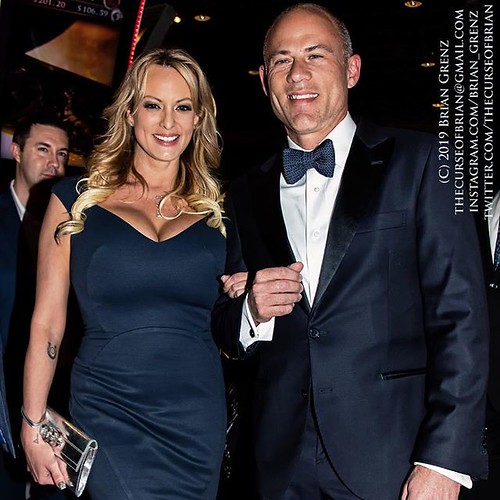Power, higher status, and larger salaries (Monroe, Ozyurt, Wrigley, Alexander, 2008). In
Energy, higher status, and greater salaries (Monroe, Ozyurt, Wrigley, Alexander, 2008). In the Usa, by way of example, despite the fact that the percentage of females who enrol in graduate programmes has been above 50 for just about two decades, ladies account for only 44 of PhDs awarded, only 38 on the fulltime faculty in all institutions of larger education, and only 4 on the tenured and tenuretrack faculty in “top” departments (Monroe et al 2008). Generally, 80 of tenured professors are male (Monroe et al 2008). Inside the Uk, Australia, and New Zealand, the figures are extremely equivalent (Johnson, Lee, Green, 2000; Nerad Cerny, 998; Ramsay, 2000; Thanacoody, Bartram, Barker, Jacobs, 2006; White, 2003, 2004). In Sweden, the situation in gender equality is by no implies various. The number of female doctoral students enhanced from 23 in 977 to 49 in(SCB, 20a), dominating in analysis fields which include humanities, law, social science, and medicine, but in larger positions only two of tenured  professors are girls (SCB, 20b). The fact that there is certainly gender equality in the starting point of a career in a sense that the entrants into academia in Sweden are usually becoming judged by their competences and suitability for the open PubMed ID:https://www.ncbi.nlm.nih.gov/pubmed/25776993 doctoral positions (Hogskoleforordning, 993:00) in lieu of becoming chosen based on gender quotas, and gender inequality later on in larger academic ranks, indicates that a thing takes place around the way, ranging from discriminationexpressed when it comes to salary variations involving men and women; resources allocation, which is still in several fields the male professors’ prerogative; and so onto a conscious decision by girls not to pursue a career in academia (Etzkowitz, Kemelgor, Neuschatz, Uzzi, Alonzo, 994; Menges Exum, 983). Several authors have attempted to clarify why females are more most likely than men to leave the path to senior academic positions (e.g Bellas Toutkoushian, 999; Dabney and Tai, 203; Levinson, Kaufman, Clark, Tolle, 99; Menges and Exum, 983; Quinn, 20). Overall, the researchers agree that the positioning of females in academia and their experiences are getting influencedCorrespondence: T. Umans, School of Health and Society, Kristianstad University, SE29 88 Kristianstad, Sweden. E mail: [email protected] 204 M. Schmidt T. Umans. This is an Open Access short article distributed under the terms with the Inventive Commons CCBY four.0 License (http: creativecommons.orglicensesby4.0), permitting third parties to copy and redistribute the material in any medium or format and to remix, transform, and make upon the material for any objective, even commercially, offered the original operate is properly cited and states its license. Citation: Int J Qualitative Stud Overall health Wellbeing 204, 9: 23059 http:dx.doi.org0.3402qhw.v9.(page quantity not for citation objective)M. Schmidt T. Umans by numerous exposures that originate from the overall atmosphere (e.g societal sex role exceptions) (Menges Exum, 983), (2) extra narrowly defined academic and work environments (e.g the Nobiletin flexibility in the work schedule, an organizational culture supporting equality, the number of related other females in the atmosphere, along with the availability of female role models in the major with the organization) (Kinman Jones, 2008), at the same time as (3) individual and genderspecific factors (e.g risktaking capacity, strain tolerance, and family members background) (Kundu Rani, 2007). It’s hence these structural, organizational, and individual variables that shed light on how ineq.
professors are girls (SCB, 20b). The fact that there is certainly gender equality in the starting point of a career in a sense that the entrants into academia in Sweden are usually becoming judged by their competences and suitability for the open PubMed ID:https://www.ncbi.nlm.nih.gov/pubmed/25776993 doctoral positions (Hogskoleforordning, 993:00) in lieu of becoming chosen based on gender quotas, and gender inequality later on in larger academic ranks, indicates that a thing takes place around the way, ranging from discriminationexpressed when it comes to salary variations involving men and women; resources allocation, which is still in several fields the male professors’ prerogative; and so onto a conscious decision by girls not to pursue a career in academia (Etzkowitz, Kemelgor, Neuschatz, Uzzi, Alonzo, 994; Menges Exum, 983). Several authors have attempted to clarify why females are more most likely than men to leave the path to senior academic positions (e.g Bellas Toutkoushian, 999; Dabney and Tai, 203; Levinson, Kaufman, Clark, Tolle, 99; Menges and Exum, 983; Quinn, 20). Overall, the researchers agree that the positioning of females in academia and their experiences are getting influencedCorrespondence: T. Umans, School of Health and Society, Kristianstad University, SE29 88 Kristianstad, Sweden. E mail: [email protected] 204 M. Schmidt T. Umans. This is an Open Access short article distributed under the terms with the Inventive Commons CCBY four.0 License (http: creativecommons.orglicensesby4.0), permitting third parties to copy and redistribute the material in any medium or format and to remix, transform, and make upon the material for any objective, even commercially, offered the original operate is properly cited and states its license. Citation: Int J Qualitative Stud Overall health Wellbeing 204, 9: 23059 http:dx.doi.org0.3402qhw.v9.(page quantity not for citation objective)M. Schmidt T. Umans by numerous exposures that originate from the overall atmosphere (e.g societal sex role exceptions) (Menges Exum, 983), (2) extra narrowly defined academic and work environments (e.g the Nobiletin flexibility in the work schedule, an organizational culture supporting equality, the number of related other females in the atmosphere, along with the availability of female role models in the major with the organization) (Kinman Jones, 2008), at the same time as (3) individual and genderspecific factors (e.g risktaking capacity, strain tolerance, and family members background) (Kundu Rani, 2007). It’s hence these structural, organizational, and individual variables that shed light on how ineq.
